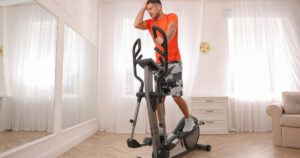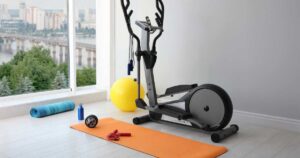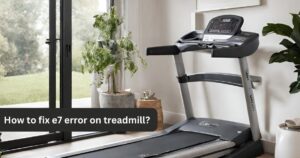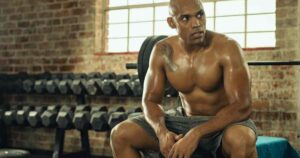List of 6 must-try exercises that start with the letter p (How To Perform, common mistakes to avoid, tips, Intensity level, Muscles Worked, And Average Calorie Burn)
Greetings, fitness fans! Welcome to our Fitness World, where strength meets explosive energy and transforms your workouts to a whole new level! As you know, we have continued a series where we discuss amazing exercises related to a specific letter.
In today’s article, we’re checking out exercises that start with the letter p, From Pistol Squats to Pull-ups, we’ll explore a range of exercises that will challenge your body and keep you motivated.
6 Must-Try Exercises That Start With The Letter p
- Pistol Squats
- Pendulum Lunges
- Pike Press
- Push-ups
- Parallel Bar Dips
- Pull-ups
Pistol Squats
Pistol squats are a challenging exercise that targets multiple muscle groups, including the quadriceps, glutes, hamstrings, and core. This unilateral movement requires balance, stability, and strength to perform it correctly.
How To Perform:
Pistol squats are a challenging exercise that targets your lower body, particularly your quads, glutes, and hamstrings. Here are the steps to do pistol squats correctly:
- Start by standing with your feet hip-width apart.
- Lift one leg off the ground and extend it forward.
- Lower yourself down into a squat position on one leg while keeping your other leg extended in front of you.
- As you go down, make sure to keep your chest up and back straight.
- Go as low as you can while maintaining balance and control.
- Push through the heel of your standing foot to rise back up to the starting position.
- Repeat on the other side.
Common Mistakes to Avoid While Doing Pistol Squats:
When it comes to pistol squats, there are some common mistakes that people often make. Avoiding these mistakes is crucial for performing the exercise correctly and preventing potential injuries.
Here are a few things to keep in mind:
- Improper form is a major mistake to avoid. Many people tend to lean forward or round their back during pistol squats. This can put excessive strain on your lower back and increase the risk of injury. Instead, focus on maintaining an upright posture throughout the movement.
- Another mistake is not engaging your core muscles properly. Your core plays a significant role in stabilizing your body during pistol squats. Failing to activate your core can result in losing balance and difficulty completing the exercise effectively.
- Additionally, rushing through the movement is another common error. Pistol squats require control and balance, so it’s important not to rush through them just for the sake of completing reps quickly. Take your time and focus on proper form rather than speed.
- Furthermore, neglecting warm-up exercises is also a mistake many people make with pistol squats. Warming up helps prepare your muscles for intense movements by increasing blood flow and flexibility. Skipping this step may lead to muscle strains or other injuries.
- Attempting advanced variations without mastering the basic technique can be risky as well. It’s essential to build strength gradually and progress safely when incorporating more challenging variations into your routine.
Tips to Maximize the Effectiveness of Pistol Squats:
- Start with the basics: Before attempting pistol squats, it’s important to have a solid foundation in regular squats and lower body strength exercises. Make sure you can perform a full squat with proper form before progressing to pistols.
- Work on your mobility: Pistol squats require excellent ankle, hip, and hamstring flexibility. include stretching exercises into your routine to improve the range of motion in these areas.
- Use assistance if needed: If you’re struggling with balance or stability, don’t be afraid to use assistance when starting. Holding onto support like a door frame or using resistance bands can help you maintain proper form while building strength.
- Engage your core: A strong core is essential for maintaining balance during pistol squats. Focus on engaging your abdominal muscles throughout the movement to stabilize your body.
- Practice unilateral training: To improve overall leg strength and stability, incorporate other unilateral exercises like lunges and step-ups into your workouts. This will help address any muscle imbalances that may hinder your progress with pistol squats.
- Gradually increase difficulty: Once you’ve mastered the basic pistol squat, challenge yourself by adding weight or trying variations like elevated pistols or jumping pistols for an extra boost of intensity.
Intensity level:
Pistol squats are an intense exercise that challenges your lower body strength and stability. The intensity level of pistol squats can vary depending on your fitness level and technique.
For beginners pistol squats may feel extremely challenging due to the balance required to perform the movement. As you become more proficient, you can increase the intensity by adding weights or performing explosive variations such as jump pistol squats.
The single-leg nature of pistol squats also increases the demand on your muscles, especially your quadriceps, hamstrings, glutes, and core. This higher muscle engagement contributes to a higher intensity level compared to traditional squat variations.
To gauge the intensity of pistol squats for yourself, pay attention to how difficult it is for you to complete each repetition with the proper form. If you find it too easy, consider adding weight or progressing to more advanced variations.
Muscle worked:
- Quadriceps: The quadriceps, located on the front of your thigh, are heavily engaged during pistol squats. They help to extend your knee and provide stability throughout the movement.
- Hamstrings: Located on the back of your thigh, the hamstrings act as stabilizers and assist in knee flexion during pistol squats.
- Glutes: Your gluteus maximus, medius, and minimus all play a significant role in pistol squats by providing power and stability. These muscles help with hip extension and abduction.
- Calves: The calf muscles (gastrocnemius and soleus) also come into action during pistol squats to provide balance and control as you lower yourself down into a deep squat position.
- Core Muscles: In addition to working your leg muscles, pistol squats engage your core muscles including the rectus abdominis, obliques, transverse abdominis, and erector spinae which helps maintain proper posture throughout the movement.
Average Calorie Burn:
The average calorie burn during pistol squats can vary depending on factors such as weight, intensity, and duration of the workout.
On average, a person weighing around 155 pounds can expect to burn approximately 100-200 calories in just 15 minutes of performing pistol squats at moderate intensity.
Pendulum Lunges
Pendulum lunges are a dynamic exercise that targets the lower body, specifically the glutes, hamstrings, and quadriceps. This exercise is beneficial for improving leg strength, stability, and balance.
How To Perform:
- Stand with your feet hip-width apart and place your hands on your hips or by your sides for balance.
- Take a big step forward with one foot, ensuring that both knees are bent at a 90-degree angle. Your front knee should be directly above your ankle, and your back knee should be hovering just above the ground.
- Engage your core and push through the heel of your front foot to return to the starting position.
- Now, take a big step backward with the same leg, lowering into a lunge position again.
- Repeat this pendulum-like movement for the desired number of repetitions before switching legs.
Common Mistakes to Avoid While Doing Pendulum Lunges:
- Poor form: One common mistake people make when performing pendulum lunges is sacrificing proper form for speed or depth. It’s crucial to maintain good posture throughout the exercise, keeping your chest up and shoulders back.
- Avoid rounding your back or slouching forward, as this can lead to strain in the lower back.
- Lack of stability: Another mistake is not maintaining balance and stability during pendulum lunges. Make sure you have a solid base by planting your front foot firmly on the ground and engaging your core muscles.
- This will help prevent any wobbling or loss of control as you move through the lunge motion.
- Overextending stride: Going too far with your stride can put unnecessary stress on your joints, particularly the knees.
- Aim for a comfortable distance between each step, allowing for a smooth and controlled movement without overstretching.
- Rushing through reps: Many people tend to rush through their pendulum lunges, sacrificing quality for quantity.
- Take your time with each repetition, focusing on proper technique and range of motion rather than trying to complete as many reps as possible.
- Neglecting upper body engagement: Remember that pendulum lunges should engage both your lower body and upper body muscles simultaneously.
- Don’t forget to swing your arms naturally in coordination with the leg movements, which helps maintain balance and adds challenge for overall strength development.
Tips to Maximize the Effectiveness of Pendulum Lunges:
- Focus on proper form: When performing pendulum lunges, it’s crucial to maintain proper form. Keep your chest up, core engaged, and shoulders relaxed throughout the movement. This will help you target the correct muscles and prevent unnecessary strain or injury.
- Start with lighter weights: If you’re new to pendulum lunges or strength training in general, it’s wise to start with lighter weights or just body weight until you feel comfortable and confident with the movement. Gradually increase the resistance as your strength improves.
- Take it slow and controlled: Rather than rushing through each lunge, take your time to perform the exercise slowly and in a controlled manner. This will not only maximize muscle engagement but also reduce the risk of injury.
- Engage your glutes: To get the most out of pendulum lunges, focus on engaging your glute muscles throughout each repetition. Squeeze your glutes at the bottom of every lunge to activate these powerful muscles even more effectively.
- Include balance exercises: Since pendulum lunges require stability and balance, incorporating balance exercises into your routine can help improve overall performance. Standing on one leg or using a stability ball are great options for enhancing balance.
- Don’t forget about recovery: As with any exercises that start with the letter p, allowing time for rest and recovery is essential for optimal results when performing pendulum lunges regularly. Make sure to listen to your body and give yourself enough rest days between workouts.
Intensity level:
The intensity level of pendulum lunges can be moderate to high, depending on various factors such as your fitness level, technique, and the number of repetitions performed. To increase the intensity level of Pendulum Lunges, you can try the following techniques:
- Add Resistance: Hold dumbbells or kettlebells in each hand while performing pendulum lunges. This added weight increases the resistance and makes the exercise more challenging.
- Increase Repetitions: Perform more repetitions of pendulum lunges during each set. This can help fatigue your muscles and enhance the overall intensity of the exercise.
- Change Speed: Perform the lunges at a slower, controlled pace to intensify the muscle engagement. You can also try incorporating explosive movements for an added challenge.
- Elevate Front or Rear Leg: Place your front foot on an elevated surface (like a step or bench) during the lunge. This increases the range of motion and engages your muscles more intensely.
Muscle worked:
- First and foremost, pendulum lunges primarily work the quadriceps muscles located on the front of your thighs. These powerful muscles are responsible for knee extension and play a crucial role in activities such as walking, running, and jumping.
- In addition to targeting the quads, pendulum lunges also engage the hamstrings. These muscles run along the back of your thighs and assist in knee flexion as well as hip extension. Strengthening these muscles not only improves athletic performance but also helps prevent injuries.
- Furthermore, pendulum lunges activate your gluteus maximus – the largest muscle in your buttocks. This muscle is responsible for hip extension, which is essential for movements like standing up from a seated position or climbing stairs.
- Pendulum lunges require core stability to maintain balance throughout the movement. As a result, they indirectly engage abdominal muscles such as the rectus abdominis (six-pack) and obliques.
Average Calorie Burn:
The average calorie burn during pendulum lunges can vary depending on factors such as intensity, duration, and individual body composition.
However, studies have shown that similar exercises can help burn approximately 200-300 calories per hour for Persons of average weight.
To maximize the calorie burn during pendulum lunges, it is important to maintain proper form and engage the muscles throughout the entire range of motion. By incorporating explosive movements and adding weights or resistance bands, you can further increase the intensity of this exercise.
Pike Press
Pike Press is a challenging exercise that targets the shoulders, triceps, and core muscles. It is a variation of the traditional push-up that requires more strength and balance.
How To Perform:
- Start by positioning yourself in a push-up position with your feet on an elevated surface, such as a bench or step.
- Your hands should be shoulder-width apart and directly under your shoulders.
- Slowly walk your feet closer to your hands, lifting your hips into the air and forming an inverted V shape with your body.
- Engage the muscles of your core and upper body as you lower your head towards the ground, keeping your elbows tucked close to your sides.
- Once you reach a comfortable depth, press through the palms of your hands to push back up into the starting position.
- Make sure to maintain proper form throughout the movement, keeping a straight line from head to heels.
- Repeat for the desired number of repetitions.
Common Mistakes to Avoid While Doing Pike Press:
- Poor Hand Placement: One common mistake when performing Pike Press is placing your hands too far forward or too far back on the ground.
- This can throw off your balance and make it difficult to maintain proper form.
- To avoid this, ensure that your hands are directly under your shoulders for optimal stability.
- Rounded Back: Another mistake to avoid is rounding your back during the exercise.
- This not only puts unnecessary strain on your spine but also reduces the effectiveness of the movement.
- Keep your core engaged and focus on maintaining a neutral spine throughout each rep.
- Lack of Control: Many people rush through their Pike Presses without paying attention to proper control and technique.
- It’s important to perform each repetition with slow, controlled movements, focusing on engaging the target muscles and maintaining stability.
- Incorrect Head Position: Your head position plays a crucial role in executing Pike Press correctly.
- Avoid tucking your chin into your chest or looking upward excessively as this can strain the neck and lead to poor alignment.
- Neglecting Proper Warm-up: Before attempting Pike Press, it’s essential to properly warm up by stretching and activating the muscles involved in the exercise, such as shoulders, triceps, and core muscles.
Tips to Maximize the Effectiveness of Pike Press:
- Maintain Proper Form: To perform a better pike press, it is crucial to maintain proper form throughout the exercise.
- Keep your legs straight and core engaged while pressing up into a handstand position.
- Start with Assisted Variations: If you’re new to pike presses, start by practicing assisted variations.
- Use a resistance band or have a partner spot you to build strength and stability before attempting the full movement.
- Strengthen Your Core: Strong core muscles are essential for executing a successful pike press.
- Include exercises such as planks, Russian twists, and leg raises into your workout routine to develop core strength.
- Focus on Shoulder Mobility: Adequate shoulder mobility is vital for performing pike presses effectively and safely.
- Prioritize shoulder stretches and mobility exercises like arm circles or wall slides in your warm-up routine.
- Gradually Increase Difficulty: As you become more comfortable with pike presses, gradually increase the difficulty level by raising your feet onto an elevated surface or using parallettes instead of the floor.
- Practice Consistently: Like any exercises that start with the letter p, consistency is key when it comes to improving your performance in pike presses.
- Set aside regular practice sessions dedicated specifically to this exercise to see progress over time.
Intensity level:
When it comes to intensity Pike Press falls on the higher end of the spectrum. This exercise requires a great deal of upper body strength and stability, making it challenging for even advanced fitness enthusiasts.
The intensity level can be adjusted based on your fitness level and goals. Beginners may start with modified versions such as pike push-ups or using an elevated surface to decrease the range of motion.
However, as you progress and become more comfortable with the movement, you can increase the difficulty by performing full Pike Presses with straight legs and a deeper range of motion.
To maximize results from this intense exercise:
- Focus on maintaining proper form throughout each rep.
- Engage your core muscles for added stability.
- Control your descent to ensure proper muscle activation.
- Gradually increase repetitions or add resistance once you’ve mastered the proper technique.
Muscle worked:
- Shoulders: The deltoids, specifically the anterior (front) and lateral (side) heads, are heavily activated during pike press. These muscles play a crucial role in shoulder stability and control.
- Triceps: Pike press requires strong triceps to push your body weight up from the downward dog position. This exercise effectively tones and strengthens these muscles located on the back of your upper arms.
- Core Muscles: To maintain balance and control throughout the movement, your core muscles come into action. The rectus abdominis (six-pack), obliques, and transverse abdominis work together to stabilize your torso and prevent any sagging or arching.
- Upper Back: Pike press engages the rhomboids, traps, and serratus anterior muscles located in your upper back region. These muscles assist with scapular retraction and stabilization during this challenging exercise.
- Chest: While not its main focus, pike press does activate the pectoralis major muscle to some extent as it aids in stabilizing your upper body during each repetition.
Average Calorie Burn:
On average a person weighing around 150 pounds can expect to burn approximately 10-12 calories per minute while doing Pike Press.
This exercise combines elements of a pike position with an overhead press movement, engaging multiple muscle groups simultaneously. The more muscles involved in an exercise, the higher the calorie consumption tends to be.
To maximize the calorie-burning potential of Pike Presses, it’s important to maintain proper form throughout each repetition. Engage your core and focus on controlled movements to get the most out of this exercise.
Push-ups
Push-ups are a classic exercise that targets multiple muscle groups, making them an effective addition to any workout routine. This bodyweight exercise mainly works the chest, shoulders, triceps, and core muscles.
How To Perform:
- Start by getting into a high plank position with your hands shoulder-width apart and slightly wider than your shoulders.
- Your body should form a straight line from head to toe.
- Engage your core muscles and lower yourself down towards the floor, bending at the elbows. Keep your elbows close to your body, not flaring outwards.
- Lower until your chest is just above the ground or as far as you can comfortably go without losing proper form.
- Pause for a moment at the bottom of the movement, then push through your palms to extend your arms and raise yourself back up to the starting position.
- Remember to breathe throughout the exercise – inhale as you lower down and exhale as you push back up.
- Repeat for the desired number of reps.
Common Mistakes to Avoid While Doing Push-ups:
- Incorrect hand placement: One common mistake people make is placing their hands too wide or too close together. To perform a proper push-up, your hands should be shoulder-width apart and aligned with your chest.
- Sagging or arching the back: It’s important to maintain a straight line from your head to your heels during a push-up. Avoid sagging or arching the back, as this puts unnecessary strain on the lower back and can lead to injury.
- Dropping the hips: Another mistake is allowing the hips to drop towards the ground during a push-up. This not only reduces the effectiveness of the exercise but also puts extra pressure on the shoulders and wrists.
- Not engaging core muscles: Many people neglect to engage their core muscles while performing push-ups, resulting in poor form and decreased stability. Remember to tighten your abdominal muscles throughout each repetition for better overall strength and control.
- Raising or lowering the head: Some Persons tend to raise or lower their head excessively during push-ups, which can strain both the neck and upper body muscles. Keep your gaze slightly forward and focus on maintaining proper alignment throughout.
- Rushing through repetitions: Rushing through push-ups without focusing on the proper form can lead to ineffective results and potential injuries. Take your time with each repetition, ensuring that you’re maintaining the correct technique from start to finish.
Tips to Maximize the Effectiveness of Push-ups:
- Start with Modified Versions: If you’re new to push-ups or find them challenging, start with modified versions like knee push-ups or incline push-ups using a bench or elevated surface. This will help build strength and gradually progress towards full push-ups.
- Focus on Breathing: Pay attention to your breath during each rep. Inhale as you lower yourself down and exhale as you push back up. Focusing on controlled breathing can help improve stability and endurance during the exercise.
- Gradually Increase Reps: Instead of pushing yourself too hard at once, focus on gradually increasing the number of repetitions over time. Consistency is key when building strength and endurance in any exercise.
- Try Different Hand Positions: Experiment with different hand positions such as wide grip, narrow grip, diamond shape (hands close together), or staggered hands (one hand slightly forward). This variation targets different muscle groups and adds more challenge to your workout routine.
- Include Variations: Once you’ve mastered traditional push-ups, add variety by incorporating challenging variations like clap push-ups, decline push-ups (feet elevated), spiderman push-ups (bringing knee towards elbow), or one-arm push-ups if you’re advanced enough.
Intensity level:
The intensity level of push ups can vary depending on factors such as body weight اند form and the variations you choose to do.
For beginners or those looking for a lower intensity workout modified push-ups can be performed by keeping the knees on the ground instead of being in a full plank position. This reduces the load on the upper body muscles and makes it easier to perform multiple repetitions.
Muscle worked:
Here is a list of the muscles that are engaged during push-ups:
- Chest: The main muscle worked during push-ups is the pectoralis major, which is responsible for the movement of your arms towards and away from your body.
- Shoulders: Push-ups also engage the deltoid muscles in your shoulders. These muscles help stabilize and control the movement of your arms as you lower and lift yourself up.
- Triceps: The triceps brachii, located on the backside of your upper arm, play a significant role in extending and straightening your elbows during push-ups.
- Core Muscles: Your core muscles, including the rectus abdominis (six-pack), obliques (side abs), and transverse abdominis (deep core stabilizers), work together to maintain stability throughout the exercise.
- Back Muscles: Push-ups activate various muscles in your back, such as rhomboids and erector spinae, which help with scapular retraction and spinal alignment.
- Legs: While not directly targeted by push-ups, certain leg muscles like the quadriceps and glutes assist in maintaining proper form by providing stability through tension.
Average Calorie Burn:
On average a person weighing around 150 pounds can expect to burn approximately 8 to 10 calories per minute while performing push-ups.
However, it’s important to note that calorie burn is influenced by individual factors such as fitness level and muscle mass. Those with more lean muscle mass tend to have a higher metabolic rate and may burn more calories overall.
To maximize calorie burn during your push-up workouts, consider incorporating variations like incline or decline push-ups or adding plyometric movements like clap push-ups into your routine.
Parallel Bar Dips
Parallel Bar Dips is a challenging and highly effective exercise that primarily targets the muscles of the upper body, specifically the chest, triceps, and shoulders.
This compound movement requires you to support your body weight on parallel bars while lowering yourself down by bending your elbows and then pushing back up to the starting position.
How To Perform:
To perform parallel bar dips correctly, follow these steps:
- Start by gripping the bars with an overhand grip. Your hands should be shoulder-width apart.
- Lift yourself up so that your arms are fully extended and your feet are off the ground. This is your starting position.
- Slowly lower your body by bending at the elbows until your upper arms are parallel to the floor or slightly below.
- Pause for a brief moment at the bottom of the movement, then push yourself back up to the starting position by straightening your arms.
- Repeat this motion for the desired number of repetitions.
Common Mistakes to Avoid While Doing Parallel Bar Dips:
- Poor Grip Placement: One common mistake people make is placing their hands too close together or too far apart on the parallel bars.
- This can put unnecessary strain on the wrists and shoulders, leading to discomfort or even injury.
- To avoid this, ensure that your hands are placed slightly wider than shoulder-width apart for proper alignment and stability.
- Lack of Control: Many Persons tend to rush through their parallel bar dips without focusing on maintaining control throughout the movement.
- This can result in a loss of form and reduced effectiveness of the exercise.
- Remember to engage your core muscles and lower yourself down slowly with control, pausing briefly at the bottom before pushing back up.
- Rounded Shoulders: Another common mistake is allowing the shoulders to hunch forward during parallel bar dips, which can place excessive stress on the shoulder joints.
- To prevent this, consciously retract your scapulae (shoulder blades) by squeezing them together as you perform each rep.
- Incomplete Range of Motion: It’s essential to go through a full range of motion when performing parallel bar dips for maximum benefit.
- Avoid cutting corners by not fully extending your arms at the top or failing to lower yourself until your elbows reach 90 degrees or slightly below.
- Arching Back: Some Persons tend to arch their backs excessively during parallel bar dips, compromising proper form and risking lower back strain or injury.
- Focus on keeping your torso upright and avoiding any excessive leaning backward as you perform each rep.
Tips to Maximize the Effectiveness of Parallel Bar Dips:
- Focus on Proper Form: To get the most out of your parallel bar dips, it is crucial to maintain proper form throughout the exercise. Keep your body straight, engage your core, and avoid swinging or flaring out your elbows.
- Gradually Increase Difficulty: If you find parallel bar dips too challenging at first, don’t be discouraged. Start by using a lower bar height or even assisted dip machines to build strength gradually. As you progress, you can increase the difficulty by raising the bars or adding weights.
- Focus on Controlled Movements: Instead of rushing through each rep, focus on performing slow and controlled movements during parallel bar dips. This will ensure that you are targeting the right muscles and avoiding unnecessary strain on joints.
- Include Variations: To keep things interesting and challenge different muscle groups, try incorporating variations of parallel bar dips into your workout routine. Examples include wide-grip dips, diamond push-ups (with hands close together), or weighted dips.
- Warm-Up Properly: Before diving into parallel bar dips, make sure to warm up properly to prevent injuries and improve performance. Dynamic stretches such as arm circles or shoulder rolls can help loosen up your upper body.
- Stay Consistent: Like any exercise routine, consistency is key when it comes to seeing results with parallel bar dips. Aim for regular workouts that progressively increase in intensity over time.
Intensity level:
The intensity level of Parallel Bar Dips can be classified as moderate to high. This exercise primarily targets the muscles in the upper body including the chest, shoulders, and triceps. It also engages the core muscles for stabilization.
As with any intense workout, it’s crucial to listen to your body and not push beyond your limits. Regularly incorporating Parallel Bar Dips into your fitness routine can help increase upper body strength and muscle endurance over time.
Remember that everyone’s fitness level varies, so what may be intense for one person might be less challenging for another.
SEE ALSO: 6 Exercises That Start With the Letter C
Muscle worked:
- Chest Muscles: Parallel bar dips primarily target the pectoralis major, which is responsible for chest development and strength. This exercise helps in building a well-defined and sculpted chest.
- Triceps: The triceps brachii muscles are heavily engaged during parallel bar dips as they work to extend the elbow joint. This leads to stronger and more defined triceps.
- Shoulders: The deltoid muscles, located in the shoulders, are also activated during parallel bar dips. They help stabilize and control the movement of the arms while performing this exercise.
- Core Muscles: To maintain balance and stability on the bars, your core muscles including the rectus abdominis (six-pack muscle), obliques, transverse abdominis, and erector spinae come into play.
- Forearms: Parallel bar dips require grip strength to hold onto the bars firmly throughout each repetition. As a result, your forearm muscles get worked out as well.
Average Calorie Burn:
The average calorie burn during parallel bar dips can vary depending on factors such as weight, intensity, and duration of the exercise. However, on average, you can expect to burn around 100-150 calories in a 15-minute session.
To maximize the calorie burn during parallel bar dips, focus on maintaining proper form and engaging your muscles throughout the movement. Keep your core tight and ensure that you lower yourself until your elbows reach a 90-degree angle before pushing back up.
Adding variations to your parallel bar dip routine can also increase the overall intensity and calorie burn. Try adding weighted vests or resistance bands to challenge yourself further.
Pull-ups
Pull-ups are a classic and challenging exercise that targets multiple muscle groups, primarily the back, shoulders, and arms. They are also known as chin-ups when the palms face towards you.
How To Perform:
- Start by gripping the pull-up bar with your palms facing away from you, slightly wider than shoulder-width apart. Hang from the bar with your arms fully extended.
- Engage your core muscles and squeeze your glutes to create a stable base for the exercise.
- Begin pulling yourself up by bending your elbows and bringing your chest towards the bar. Focus on using the strength of your back muscles rather than relying solely on arm strength.
- Continue pulling until your chin is above the bar or as close as you can comfortably get.
- Slowly lower yourself back down to the starting position with control, extending your arms fully before beginning another repetition.
- Repeat this motion for a desired number of repetitions or until exhaust sets in.
Common Mistakes to Avoid While Doing Pull-ups:
- Using Momentum: One common mistake people make while doing pull-ups is relying too much on momentum to complete the movement.
- This not only reduces the effectiveness of the exercise but also increases the risk of injury.
- Instead, focus on using your upper body strength to initiate and control the movement.
- Not Engaging Your Core: Neglecting your core muscles during pull-ups can lead to poor form and limited range of motion.
- Make sure to engage your core by tightening your abs and keeping your body straight throughout the exercise.
- Gripping Too Narrow or Wide: The grip width plays a crucial role in targeting different muscle groups during pull-ups.
- Gripping too narrow may put excessive strain on your wrists while gripping too wide can limit your range of motion and decrease muscle activation.
- Find a grip that is comfortable for you, usually slightly wider than shoulder-width apart.
- Arching Your Back: It’s important to maintain proper form during pull-ups, which includes avoiding excessive arching of the back or swinging motions.
- Keep a neutral spine position throughout the exercise to effectively target your back muscles and minimize strain on other areas.
- Neglecting Eccentric Phase: Many Persons tend to neglect or rush through the eccentric phase (lowering) of a pull-up, focusing solely on pulling themselves up (concentric phase).
- However, controlling this downward movement is equally important for building strength and preventing injuries.
Tips to Maximize the Effectiveness of Pull-ups:
- Gradually Increase Reps: If you’re just starting with pull-ups, don’t push yourself too hard in the beginning. Start with a few reps and gradually increase the number as your strength improves.
- Perfect Your Form: Proper form is crucial for effective pull-ups and reducing the risk of injury. Make sure to engage your core, keep your shoulders down and back, and use a full range of motion.
- Use Assisted Pull-up Machines or Bands: If you’re struggling to do full bodyweight pull-ups, try using assisted pull-up machines or resistance bands to help support some of your weight until you build enough strength.
- Include Negatives into Your Routine: Negatives are an excellent way to build strength for pull-ups. Start by jumping up to the top position and then lower yourself down slowly, focusing on controlling the movement.
- Strengthen Your Grip: A strong grip is essential for successful pull-ups. include exercises like farmer’s walks or forearm curls into your routine to improve grip strength.
- Mix Up Your Grips: Switching between different grips can target different muscles and prevent plateaus in progress. Experiment with a wide grip, narrow grip, chin-up grip, or neutral grip variations.
- Don’t Forget About Back Exercises: Strengthening your back muscles will directly impact your ability to perform better pull-ups. Include exercises such as rows, lat pulldowns, and inverted rows in your training program.
Intensity level:
Pull-ups are a challenging exercise that can test your upper body strength and endurance. The intensity level of pull-ups can vary depending on factors such as your fitness level, body weight, and the number of repetitions performed.
For beginners or those with limited upper body strength, pull-ups may be quite intense. They require significant effort from muscles like the back, shoulders, and arms to lift your entire body weight.
As you become more proficient in performing pull-ups, the intensity level may decrease somewhat as your muscles adapt to the exercise.
However, there are ways to increase the intensity of pull-ups to continue challenging yourself. One way is by adding additional resistance using a weighted vest or belt. This extra load increases the demand placed on your muscles and makes each repetition more difficult.
Another way to increase intensity is by incorporating different variations of pull-ups into your routine. These include wide-grip pull-ups, close-grip chin-ups, or commando pull-ups.
Each variation targets slightly different muscle groups and adds variety to keep things interesting while increasing overall difficulty.
Muscle worked:
- Latissimus Dorsi (Lats): The main muscle targeted during pull-ups is the latissimus dorsi or lats for short. These large muscles run down the sides of your back and give you that coveted V-shape physique.
- Biceps Brachii: Your biceps also play a significant role in pull-ups as they assist in pulling your body weight up towards the bar.
- Rhomboids: Located between your shoulder blades, these muscles help retract and stabilize your scapulae during the movement.
- Trapezius: The upper trapezius muscles located at the top of your shoulders work to stabilize and support your shoulder girdle throughout each rep.
- Forearms: Grip strength is essential for performing pull-ups, so it’s no surprise that this exercise also engages your forearm muscles.
- Core Muscles: While primarily targeting the upper body, pull-ups also engage your core muscles to provide stability and control throughout the movement.
Average Calorie Burn:
The average calorie burn during a set of pull-ups varies depending on factors such as your body weight and intensity level.
However, On average, a person weighing around 150 pounds can expect to burn approximately 6-8 calories per minute while performing pull-ups.
Keep in mind that the number of calories burned may differ for Persons with different weights or fitness levels. Additionally, the intensity at which you perform pull-ups can impact the calorie burn.
For example, doing explosive or weighted pull-ups will require more effort and result in higher caloric consumption.
To maximize your calorie burn during pull-up sessions:
- Aim for proper form to engage all targeted muscles effectively.
- Gradually increase the number of repetitions or sets over time.
- Add variety by incorporating different grip variations like wide grip or chin-up grip.
- Consider adding additional resistance through a weight belt if necessary.
FAQs
Can I do pistol squats every day?
When it comes to incorporating pistol squats into your daily routine, the answer isn’t as straightforward as a simple “yes” or “no.” Like any exercise, it’s important to listen to your body and avoid overtraining.
Pistol squats are an intense movement that targets multiple muscles in your legs, so giving them proper rest is crucial for recovery and growth.
Doing pistol squats every day can lead to muscle fatigue and potential injury if not managed correctly.
It’s recommended to allow at least 24-48 hours of rest between each session to give your muscles time to repair and rebuild stronger than before.
This will help prevent overuse injuries and ensure optimal performance during your climbing sessions.
Does Pike Press build shoulders?
One of the exercises that can significantly help in building strong and well-defined shoulders is the Pike Press.
This challenging exercise targets the deltoids, triceps, and upper back muscles. By incorporating it into your workout routine, you can enhance your overall shoulder strength and stability.
This exercise not only builds muscle strength but also improves shoulder mobility and flexibility. It activates both the anterior (front) and posterior (rear) delts, helping achieve a balanced development of these important shoulder muscles.
Does doing push-ups stop height?
Many people believe that doing push-ups can stunt your growth and prevent you from growing taller. However, this is nothing more than a myth. There is no scientific evidence to suggest that performing push-ups will have any negative impact on your height.
When it comes to height, genetics play the most significant role in determining how tall you will be. Factors such as nutrition and overall health also contribute to growth during childhood and adolescence. Push-ups alone cannot alter or interfere with these processes.
Are parallel bar dips bad for shoulders?
Are parallel bar dips bad for shoulders? This is a common question among fitness enthusiasts, especially those who are looking to strengthen their upper body.
Parallel bar dips can be an effective exercise for targeting the chest, triceps, and shoulders. However, if performed incorrectly or with excessive strain on the joints, they can potentially lead to shoulder pain or injury.
One of the main reasons why parallel bar dips may be considered risky for the shoulders is because they require a significant range of motion in this joint.
If you have pre-existing shoulder issues or lack proper mobility and stability in your shoulders, performing parallel bar dips could exacerbate these problems.
Do pull-ups help to increase the height?
Many people wonder if pull-ups can help increase height. So, let’s find out.
While pull-ups are great for developing back and arm muscles, there is no scientific evidence to suggest that they can directly increase your height. Height is primarily determined by genetics and factors like nutrition and overall health during childhood and adolescence.
However, it’s important to note that regular exercise, including pull-ups, can contribute to good posture and spinal alignment. By strengthening the muscles in your back and shoulders, pull-ups may help you maintain proper posture, which can make you appear taller.
Wrapping Up
So there you have it, an amazing lineup of exercises that start with the letter P. From push-ups to punch drills, these exercises that start with the letter p are sure to keep you motivated and get your heart pumping.
Remember, consistency is key when it comes to seeing results. Including these exercises that start with the letter p in your fitness routine will not only target specific muscle groups but also improve your overall strength and stamina.
So It’s time to put on those workout clothes, grab some water, and get ready to tackle these amazing exercises that start with the letter P.









